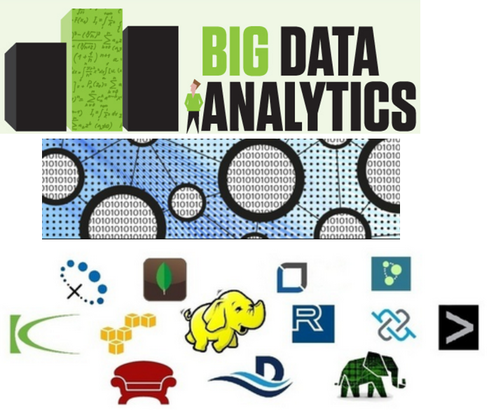Teradata Scales Up R Analytics On AsterTeradata Scales Up R Analytics On Aster
Teradata Aster already supports MapReduce, graph, and SQL analysis. Aster R feature adds faster, scaled, R-based analytics.


10 More Powerful Facts About Big Data
10 More Powerful Facts About Big Data (Click image for larger view and slideshow.)
Teradata announced last week that it's bringing support for open-source, R-based analytics to its data-discovery-focused Aster database with a new feature called Aster R.
Aster R is aimed at speeding and scaling R-based analytics on a massively parallel processing platform. R is the primary tool used by 24% of data miners, and 70% of data miners are using R in some way, according to the Rexer 2013 Data Miner Survey. Teradata is responding to that demand while addressing the fact that standard R tools are not terribly scalable.
"Users often can't handle big-data analyses with R because they can't bring all that data down to a desktop or server, and they run out of memory or processing power," explained Chris Twogood, Teradata's VP of product and services marketing, in an interview.
[The Aster strategy is reminiscent of Apache Spark. Read Will Spark, Google Dataflow Steal Hadoop's Thunder?]
Teradata has taken R's most popular algorithms and parallelized them to optimize their performance on Aster. This ensures that R programmers can spread analyses across nodes without a lot of programming, according to Twogood. In addition, Teradata has prepackaged more than 20 R functions into the Aster R library, and it also includes a Parallel Constructor utility that lets users run their favorite R functions and algorithms on Aster.
Given R's rising popularity, Teradata isn't the only company jumping on the bandwagon. InformationBuilders, Oracle, SAP, and even SAS and Tibco Spotfire have added support for R. And several vendors, including Alpine Data Labs and Revolution Analytics, also have addressed scale-out analysis on clustered servers. In fact, Teradata has a deal with Revolution whereby its R analytics can run in-database inside of Teradata.
Teradata's advantage with Aster R is that it has a broader data-discovery platform that addresses more than just R. Teradata acquired Aster Data in 2011 in large part because it offers SQL-based MapReduce processing, so it can handle techniques such as text, time-series, and statistical analysis as well as standard SQL analysis. Teradata added support for graph analysis to Aster last fall. With Aster R, the platform becomes even more comprehensive, yet all these engines are invoked with familiar SQL programming.
"You could have a query that invokes the Aster SQL engine, MapReduce engine, graph engine, and R, and the Aster optimizer will synchronize resources and ensure that all those engines share data and talk to each other," says Twogood. In a customer-churn analysis scenario, for example, companies might want to combine R-based logistic regression, MapReduce-based time-series analysis, SQL-based customer segmentation, and graph-based network-influencer analysis to spot influential, high-value customers likely to bolt.
As we pointed out in this week's extensive coverage of Apache Spark, Teradata seems to share the same strategy as this four-year-old open-source platform, albeit using Aster, a commercial database. Teradata's new R support in Aster is expected to become a beta offering later this month, and general release is expected in the fourth quarter.
information's June Must Reads is a compendium of our best recent coverage of big data. Find out one CIO's take on what's driving big data, key points on platform considerations, why a recent White House report on the topic has earned praise and skepticism, and much more.
About the Author
You May Also Like






